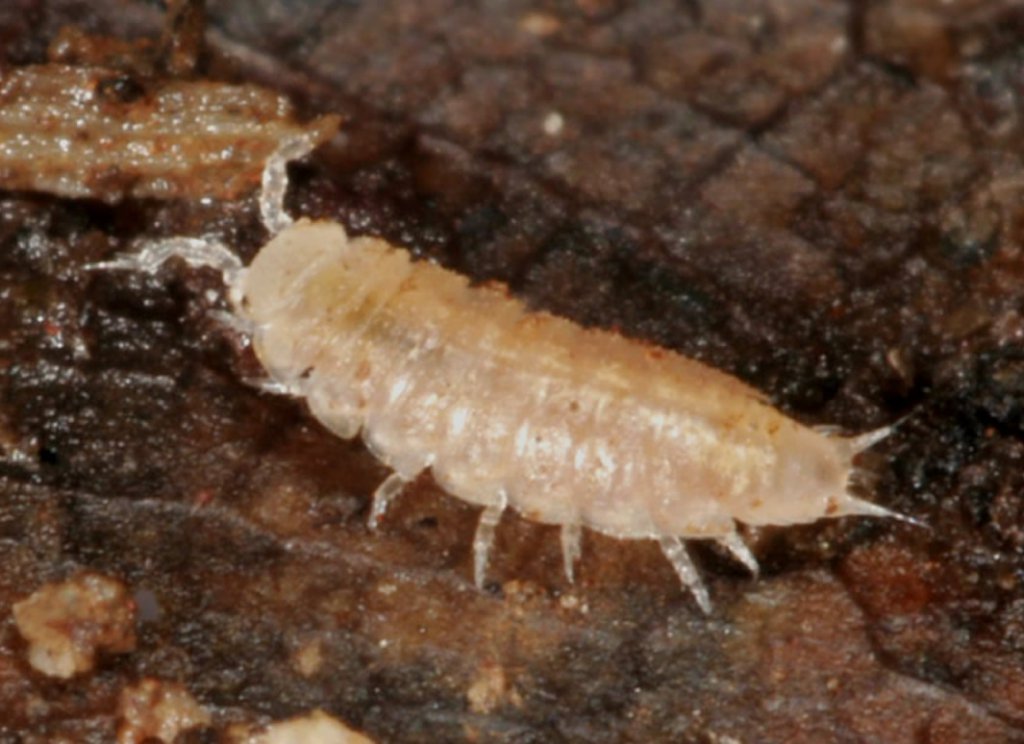Trichoniscus pygmaeus G.O. Sars, 1898
Common name
Status:
GB IUCN status: Least Concern
ID Difficulty
Identification
The pygmy woodlice of family Trichoniscidae (and Styloniscidae) are readily distinguished from other woodlice by the shape of the antennal fagellum which comprises a tapered cone (of indistinct segments) bearing a terminal bristle.
Trichoniscus species are characterised by having the eyes composed of three ommatidia and a smooth body surface. Body and eye pigments are retained in alcohol.
Trichoniscus pygmaeus is one of our smallest woodlice, reaching 2.5 mm in length, and often confused with juveniles of other species. T. pygmaeus is usually pale pinkish-yellowish in colour, but characteristically the head appears noticeably pale relative to any body pigmentation.
Of potential confusion species; immature T. pusillus agg. has the head is speckled with pigment to match the body colour while both Trichoniscoides spp. and immature Androniscus dentiger have the body covered in tubercles and eyes comprising a single ommatidium.
Distribution
Although common throughout Britain and Ireland, it is under-recorded in many areas (the distribution map simply reflects where experienced recorders have been active). It occurs wherever there are suitable friable soil conditions, including semi-natural grasslands, woodlands and coastal (supralittoral) habitats, and synanthropic sites such as churchyards, disused quarries and railway cuttings.
Habitat
Searching the underside of large stones or dead wood partially embedded into soil is the simplest way to find this species. Often just single specimens are seen, but it can be numerous in soil extraction samples. It is typically associated with other soil-dwelling trichoniscids, including Androniscus dentiger, Haplophthalmus spp. and Trichoniscoides spp.
This summary is based on the detailed account in Gregory (2009).
References
Gregory, S. (2009) Woodlice and Waterlice (Isopoda: Oniscidea & Asellota) in Britain and Ireland. Field Studies Council/Centre for Ecology & Hydrology.
Links
World List of Marine, Freshwater and Terrestrial Isopod Crustaceans: https://www.marinespecies.org/isopoda/aphia.php?p=taxdetails&id=263753










